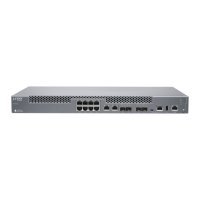Table 24: Cable Specifications for Console and Management Connections for the MX150
Device
Receptacle
Maximum
LengthCable SuppliedCable Specification
Port on MX150
Device
RJ-452.13 metersOne 2.13-meter-long RJ-45
patch cable and RJ-45 to DB-9
adapter
RS-232 (EIA-232) serial cableConsole port
RJ-452.13 metersOne 2.13-meter-long RJ-45
patch cable
Category 5 cable or equivalent
suitable for 1000BASE-T
operation
Management port
Related
Documentation
Console Port Connector Pinouts for MX150 on page 32•
• Management Port Connector Pinout Information for an MX150 on page 33
• Connecting an MX150 to a Management Console on page 90
• Connecting an MX150 to a Network for Out-of-Band Management on page 89
Understanding MX150 Fiber-Optic Cable Signal Loss, Attenuation, and Dispersion
To determine the power budget and power margin needed for fiber-optic connections,
you need to understand how signal loss, attenuation, and dispersion affect transmission.
The MX150 uses various types of network cable, including multimode and single-mode
fiber-optic cables.
•
Signal Loss in Multimode and Single-Mode Fiber-Optic Cables on page 66
•
Attenuation and Dispersion in Fiber-Optic Cable on page 67
Signal Loss in Multimode and Single-Mode Fiber-Optic Cables
Multimode fiber is large enough in diameter to allow rays of light to reflect internally
(bounce off the walls of the fiber). Interfaces with multimode optics typically use LEDs
as light sources. However, LEDs are not coherent light sources. They spray varying
wavelengths of light into the multimode fiber, which reflects the light at different angles.
Light rays travel in jagged lines through a multimode fiber, causing signal dispersion.
When light traveling in the fiber core radiates into the fiber cladding (layers of lower
refractive index material in close contact with a core material of higher refractive index),
higher-order mode loss occurs. Together, these factors reduce the transmission distance
of multimode fiber compared to that of single-mode fiber.
Single-mode fiber is so small in diameter that rays of light reflect internally through one
layer only. Interfaces with single-mode optics use lasers as light sources. Lasers generate
a single wavelength of light, which travels in a straight line through the single-mode fiber.
Compared to multimode fiber, single-mode fiber has a higher bandwidth and can carry
signals for longer distances. It is consequently more expensive.
For information about the maximum transmission distance and supported wavelength
range for the types of single-mode and multimode fiber-optic cables that are connected
Copyright © 2017, Juniper Networks, Inc.66
MX150 3D Universal Edge Router Hardware Guide

